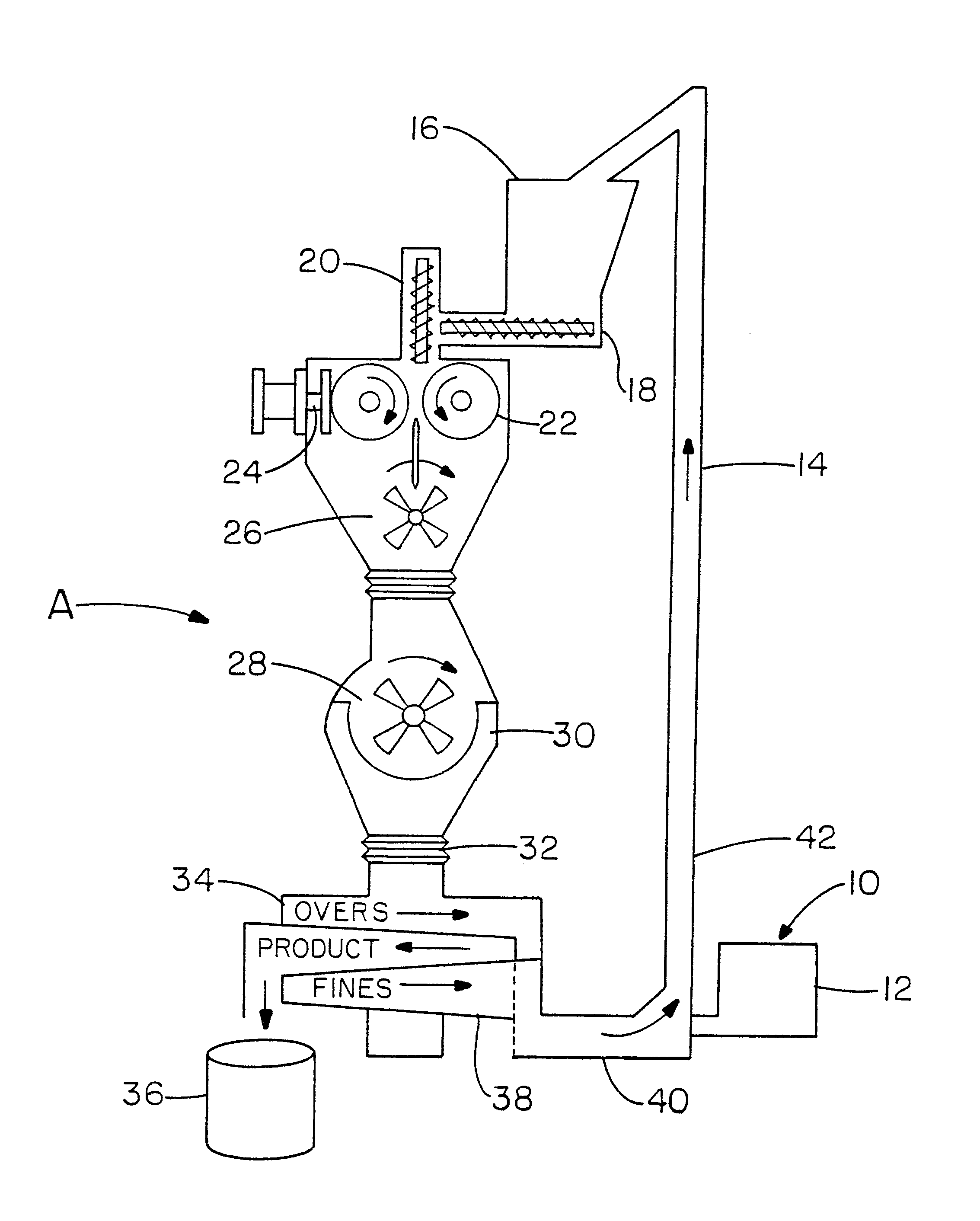Controlled release polyacrylic acid granules and a process for preparing the same
a polyacrylic acid and granule technology, applied in the direction of impression caps, capsule delivery, dental prosthetics, etc., can solve the problems of poor flow characteristics of powders, material handling problems, and resistance to liquid blending and dispersion, so as to facilitate metering and mixing operations, improve the dry flow characteristics, and improve the effect of particle size control
- Summary
- Abstract
- Description
- Claims
- Application Information
AI Technical Summary
Benefits of technology
Problems solved by technology
Method used
Image
Examples
preparation examples 1 and 2
The following examples utilized a Fitzpatrick Model 4L.times.10D Chilsonator and DKAS012 FitzMill system. This equipment is illustrated in FIG. 1. The Fitzpatrick Company has a compaction division in Elmhurst, Ill., which sells this type of equipment. Another supplier of similar equipment is Alexanderwerk based in Germany and having a sales office in New Jersey. The Chilsonator used two 4" long rolls having diameters of 10". Vacuum was applied in the area of the vertical screw. The material granulated was Carbopol.RTM. 971 P, a lightly crosslinked polyacrylic acid powder.
TABLE Ia
Tables I and Ia show that drug release time can be adjusted by manipulating roll compaction pressure. The tablet from Table Ia release rate tests was formulated with a similar recipe to Table III, and compacted with sufficient pressure to result in a tablet with a hardness of 9-11 kilopounds using a standard U.S.P. crushing strength tester.
Tables I and Ib show how thickening ability decreases only slightly w...
formulation examples
The following examples illustrate the physical characteristics of granules produced according to the present invention. The samples were prepared using a Fitzpatrick IR-520 Chilsonator roll compactor and a M5A Fitzmill attritor. Carbopol.RTM.971 P was used in the following examples.
The following Examples illustrate pharmaceutical tablet formulations comprising theophylline. Examples 1 and 2 utilize Carbopol granules from Table II above. Comparative examples include powdered polyacrylic acid and polyacrylic acid granules produced by fluidized bed granulation. All amounts used in % w / w.
Table IV, below, shows properties of powder mixtures and tablets formed from granules prepared according to the present invention compared to powder mixtures and tablets formed from either powdered polyacrylic acid (Ex. 3) or granules produced via the fluidized bed technique (Ex. 4).
Table IV shows that the flowability (flow-index) of the tableting powder mixture prepared from various granular forms of p...
PUM
| Property | Measurement | Unit |
|---|---|---|
| concentration | aaaaa | aaaaa |
| pH | aaaaa | aaaaa |
| viscosity | aaaaa | aaaaa |
Abstract
Description
Claims
Application Information
 Login to View More
Login to View More - R&D
- Intellectual Property
- Life Sciences
- Materials
- Tech Scout
- Unparalleled Data Quality
- Higher Quality Content
- 60% Fewer Hallucinations
Browse by: Latest US Patents, China's latest patents, Technical Efficacy Thesaurus, Application Domain, Technology Topic, Popular Technical Reports.
© 2025 PatSnap. All rights reserved.Legal|Privacy policy|Modern Slavery Act Transparency Statement|Sitemap|About US| Contact US: help@patsnap.com

